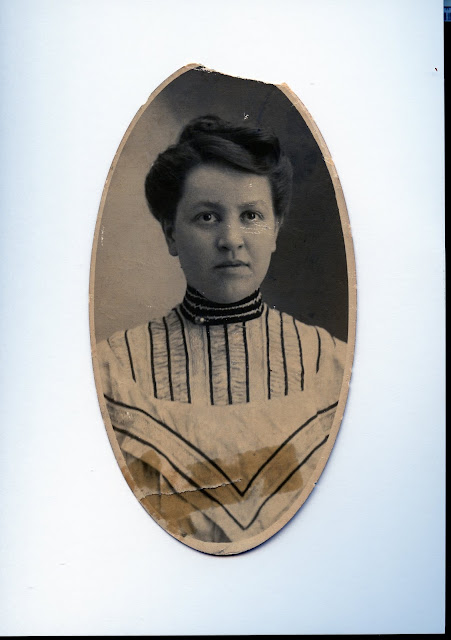Four days after Christmas, 1878, Anthony and Henrietta Koewler stood in St. Michael Catholic Church in Ripley, Ohio and witnessed the baptism of their three week old baby daughter, Caroline Catherine. Frederick Wucher and Catherine Gast served as her godparents.
Caroline, or Carrie as she was called, was the eighth child of Anthony and Henrietta (Fischer) and spent her childhood in a house near Eagle Creek in Brown County, Ohio. When she was about 21 years old, she went to live with her brother, Henry, and his family in Evansville, Indiana. Not only did her brother live in that city, but both her paternal and maternal uncles, Thaddeus Koewler and Jacob Fischer, also lived in the city. In the 1900 census, Carrie can be found working in Evansville as a maid for the Christian Felker family. According to the August 13 issue of the Georgetown, Ohio News Democrat, she returned to Ripley.
"Miss Callie [sic] Koewler, who has been making her home with her brother at Evansville, Ind., and returned here Friday, is reported to be seriously ill with typhoid fever at the home of her mother, near town."
After recovering from her illness, she returned to her brother's house. She met a German immigrant, Henry Lutz, who lived with his parents in Evansville. In October 1904, they obtained their license to marry and on December 26 of that year they were wed by Father L. W. Burkhardt in St. Boniface Catholic Church. Henry and Caroline made their home at 1222 West Michigan Street in Evansville.
The following summer, Caroline was expecting her first child. It is not known whether she had a difficult beginning to her pregnancy, but it is documented in the newspaper that in July she was hospitalized at St. Mary's Hospital in Evansville. On March 7, 1906, Walter John Lutz was born. Whether the pregnancy and subsequent childbirth brought about Caroline's organic heart disease or it was something she had previous to getting pregnant is not known, but it is apparent that giving birth weakened her to the point of exhaustion. On April 3rd, the Evansville Courier and Press reported that Caroline was seriously ill at her home on West Michigan Street. In addition, baby Walter never thrived and on April 5th, according to his death certificate, he died from marasmus and spasms which is a condition brought about from a lack of nutrition. The next day, Walter John Lutz was buried in St. Joseph Catholic Cemetery while his mother
"was unable, from her extreme weakness to even lift her hand to stroke the little one's dying brow and could not leave her bed to follow the baby's remains to the little grave in the cemetery." *
In fact, her condition was so serious that she died the very next day and was laid to rest next to Walter on April 10. Her death was reported in the Evansville newspaper and in the Ripley (Ohio) Bee.
 |
| Ripley Bee, page 1, April 11, 1906 |
* "Mother Follows Her Babe To The Grave", obituary, Evansville Courier and Press, 8 April 1906, page 13, Evansville, Indiana


